Two decades ago, Honda introduced the first hybrid car to the American market, the teardrop-shaped, two-seat, three-cylinder Insight. But Toyota's Prius, with twice as many seats and a much stronger electric motor, arrived soon afterwards and quickly overshadowed the original Insight. Then, for 2004, Toyota introduced a much-improved second-generation Prius, and many people came to equate that car with "hybrid." It owned the mindspace. Hardly anyone remembered Honda had actually been first.
A decade ago, Honda took another swing at a hybrid-only model, and resurrected the Insight nameplate. By that time it had become clear that people expected a hybrid to look unlike other cars. So the the second-generation Insight looked like...a Chinese Prius knock-off. It drove like one too. I was not impressed, and wondered what had happened to the innovation and creative design that used to typify Hondas. Car buyers didn't like the car much better than I did, and Honda discontinued its second Insight a few years later.
Last year Honda's lineup regained an Insight. Once again the car is a hybrid-only model with its own styling inside and out. Should this Insight have more staying power? Or is this the nameplate's third strike?
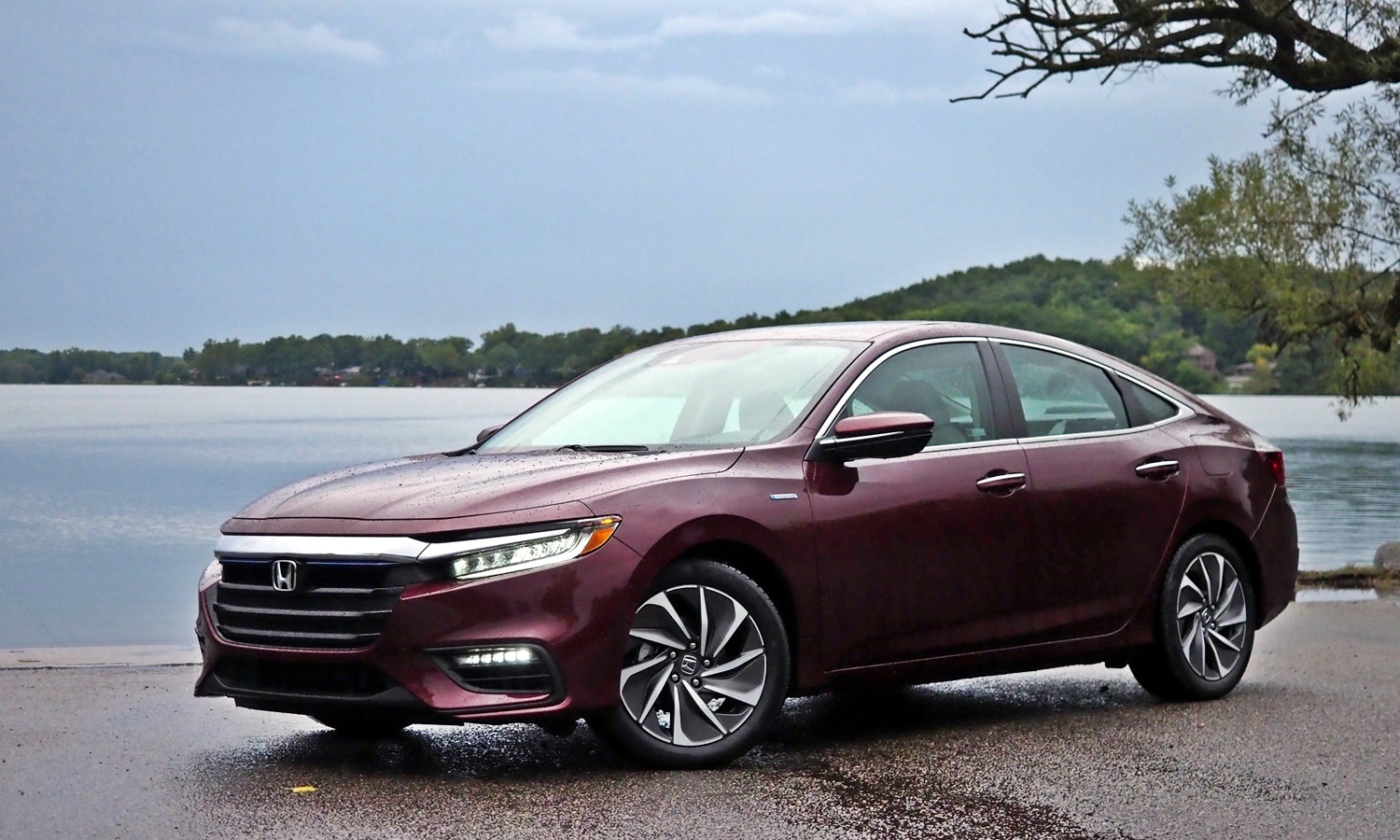
Similar to the related Civic, but without the latter's questionable details. more Insight photos
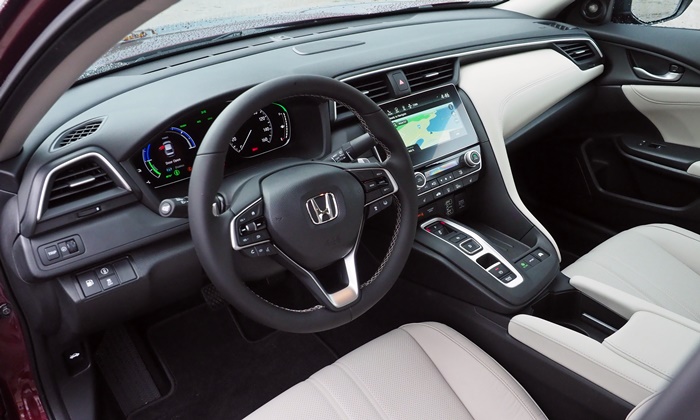
More upscale than the competition.
| |
Compared to the Prius |
| Fuel economy |
 Better
Worse
Better
Worse
|
Honda's initial approach to hybrid powertrain technology wasn't a winner. A weak electric motor (13 horsepower in the case of the 2010 Insight) sandwiched between a gas engine and a CVT wasn't able to deliver nearly as much of a performance or fuel economy bump as the much stronger electric motors in Toyota's radically different hybrid system.
Starting with the 2014 Accord Hybrid, Honda tried a new approach. The new system relied entirely on a much more powerful (166 horsepower) electric motor to drive the wheels up to 43 mph, and only then directly engaged the gas engine via a single-speed transmission. This was the sort of elegant "we keep it simple" solution Honda used to be known for, and it worked far better. EPA ratings of 50 mpg city and 45 mpg highway were best-in-class, topping the Toyota Camry Hybrid. This system received further tweaks when the Accord was redesigned for 2018, with mixed results for mpg (now 48/47). The Toyota Camry, also redesigned for 2018, now scores 51/53 or 44/47 depending on trim level.
When I learned that a new Honda Insight would utilize a similar hybrid system with a 1.5-liter engine instead of the Accord's 2.0-liter in a smaller, lighter car, I had high hopes. Could a 60-mpg rating happen? Well, it didn't. The Honda Insight LX and EX score 55 mpg city and 49 mpg highway in the EPA's testing. The tested Touring trim, with larger tires and a higher curb weight, scores a little lower, 51/45. Pretty good. But a Toyota Prius (58/53 or 54/50, depending on the variant), a Toyota Corolla Hybrid (53/52), or a Hyundai Ioniq (57/59 or 55/54) scores better.
In my testing, the trip computer reported averages ranging from 45 mpg to 75 mpg in suburban driving. (Whether the system opts to charge or draw energy from the battery pack has a big effect on the reported average during short drives.) In one 20-mile drive around hilly Ann Arbor the trip computer reported an impressive 64 mpg--and 93.6 mpg during the initial three miles. But in a Toyota Prius I averaged 65 mpg over the entire week despite some colder weather--it struggled to top 60 when the air temperature fell to 40--and observed trip averages over 90 a couple of times. Air temperatures were usually in the 60s during the week I had the Insight, optimal for fuel economy.
The Honda Insight disappointed in highway driving. When cruising near 80 mph, a speed at which it can't take much advantage of its hybrid configuration, the Insight averaged 40 mpg. Good, but little better than a non-hybrid Civic. I observed a bit over 60 mpg on the highway in the Prius.
Given these results, I struggled with listing fuel economy among the reasons to buy the new Insight. On the one hand, all of its direct competitors have higher EPA ratings. On the other, the Insight's mpg compares very well to non-hybrids, and fuel economy will be a primary reason people buy one.
| Price or payments |
 Better
Worse
Better
Worse
|
The 2020 Honda Insight LX, with Honda's suite of collision avoidance features and LED headlights standard, lists for $23,860, while the tested Touring, with leather, nav, a sunroof, and such, lists for $29,270.
List prices on the Toyota Prius with front-wheel drive (an AWD version has been added) range from $25,280 to $33,455. What does the top-of-the-range Prius Limited offer for an extra $4,000 and change? Headlights that adapt to turns, high-quality vinyl instead of leather, a wireless smartphone charger, a blind spot warning system instead of a passenger side rearview camera, a head-up display (HUD) for the instruments, obstacle detection systems, and an automated parking system. But the Prius Limited only includes a sunroof if you add a $515 "package" than also replaces the standard 17-inch wheels with far less attractive 15-inch wheels (probably to offset the weight of the sunroof). And the Prius doesn't offer a power passenger seat, while the Insight Limited has a passenger seat with power fore-aft and recline. For 2021, the Insight EX and Touring will gain blind spot warning and their prices go up about $500. The Honda seems like a much better value than the Toyota unless you do a lot of highway driving, in which case it will use considerably more gas.
For 2020, Toyota also offers the Corolla in hybrid form, but only in midlevel LE trim, for $24,055. If you want your compact hybrid to be somewhat luxurious, the Corolla is out of the running.
List prices of the 2020 Hyundai Ioniq range from $24,175 to $32,175, and thus fall between those for the Honda and the Toyota. The Ioniq Limited is equipped much like the Insight Touring, but adds obstacle detection (also on the Toyota), wireless cell phone charging (ditto), and memory for the driver seat. Like the Toyota it offers no power adjustments on the passenger seat. So, which is the better value, the Honda or the Hyundai? Look only at list prices, and the Honda has an edge. But discounts and incentives tend to be larger on Hyundais, and these could tip the balance. BUT also consider depreciation, and in the long run the Honda likely retains an edge.
It's also worth noting how the Insight's pricing compares to that of the related Civic. Honda's non-hybrid compact sedan lists for $20,805 to $28,645. So the Civic starts out much lower, in part because the Civic LX has less standard equipment than the Inight LX and a weaker engine than the Civic EX and Touring, but similarly tops out near $29,000.
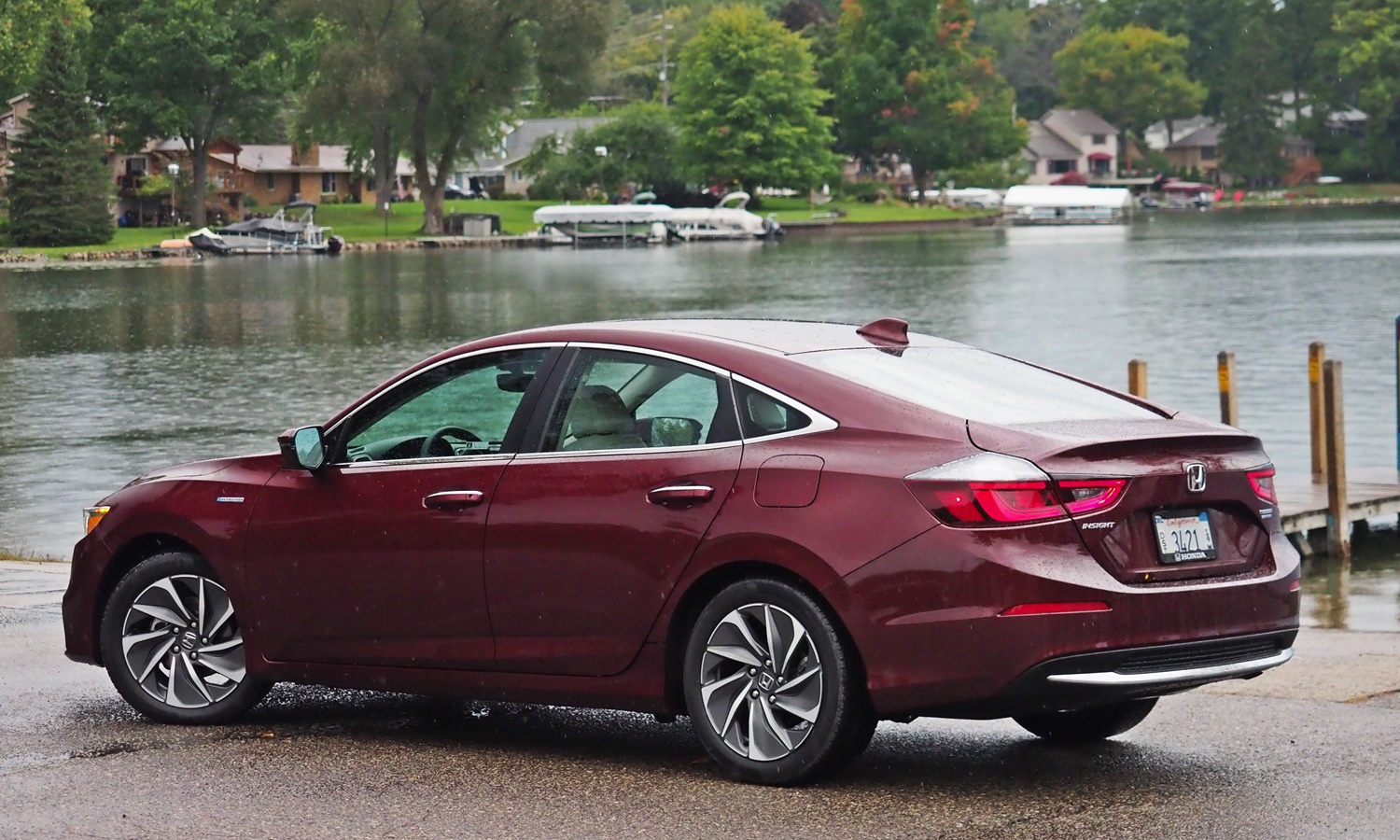
Looks long for a compact.
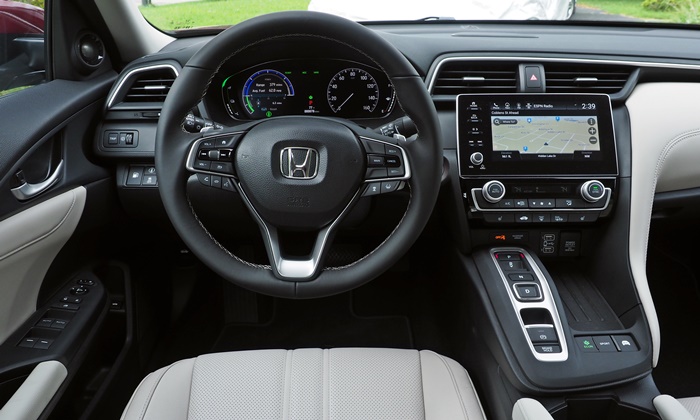
Most controls are well-designed. But I'm not a fan of the shift buttons for the transmission.
| Exterior styling |
 Better
Worse
Better
Worse
|
Many people, including myself, look at the current Honda Civic and think, "Striking shape, but why did they add all of these weird little details?" Well, the third Insight's exterior is essentially that of the Civic without the weird little details. It appears handsome and somewhat upscale.
But does the Insight's exterior also border on generic and forgettable? Maybe this is why Honda felt the need for the weird little details on the Civic. The Prius taught auto makers that car buyer's expected a hybrid to have distinctive styling. Well, the Insight's styling compared to that of the Civic is distinctive in that it's less distinctive.
| Interior styling |
 Better
Worse
Better
Worse
|
The new Honda Insight's interior is much the same as its exterior: attractive, and more upscale than those in the Prius, Corolla, and Ioniq, but less striking than that of the Civic. I can see people buying the Insight because it has a more appealing interior than competitors while being nearly as economical.
| Powertrain performance |
 Better
Worse
Better
Worse
|
With a 107-horsepower gasoline engine and 129-horsepower electric motor, the Insight can get from a dead stop to 60 mph in slightly under eight seconds. While this isn't exactly quick by current standards--even a Civic Touring or an Accord Hybrid is about a second quicker--it is quicker than the Hyundai Ioniq (around nine) and the Toyota Prius and Corolla Hybrid (over ten). We'll get to the subjective experience of this performance next.
| |
Compared to the Prius |
| Quietness |
 Better
Worse
Better
Worse
|
With one notable exception, the Honda Insight seems smooth, solid, and quiet. That exception: engine noise during around-town driving. Honda's latest hybrids employ a unique configuration: at around-town speeds the engine isn't mechanically coupled to the front wheels. Instead, it generates electricity for an electric motor that drives the front wheels. While this makes for a relatively simple and efficient powertrain, it also means that engine speed is even less related to road speed than with a CVT. The resulting disconnects between changes in engine noise and changes in vehicle speed can border on unpleasant if you're at all sensitive to such things.
It does not help that Honda does not tune and suppress this engine noise as well as some competitors (most notably Nissan and Toyota) do. This is especially the case with the relatively small and weak 1.5-liter engines used in the Fit, HR-V, and Insight. When pushed at all the Insight's powertrain sounds and feels like its straining. To be fair, this is an issue to some extent with nearly all four-cylinder hybrids. They all present best in casual driving.
A "sport mode" pipes some synthetic engine noises through the Insight's audio system. They aren't convincing, and cover the real engine noises about as well as cheap perfume covers body odor.
Some reviewers have also described tire noise on the highway as excessive.
| Cargo capacity |
 Better
Worse
Better
Worse
|
While the Prius, Ioniq, and the first two Insights are hatchbacks, the latest Insight is a sedan. So it cannot hold as much of your stuff. But maybe you prefer a sedan. If so, the only other option in this class is the Toyota Corolla, the trunk of which is about ten percent smaller. In both hybrid sedans the rear seat folds to reveal a generously sized pass-through. In some past hybrid sedans where the hybrid bits weren't packaged as well the seat would fold to reveal a small slot, if it folded at all.
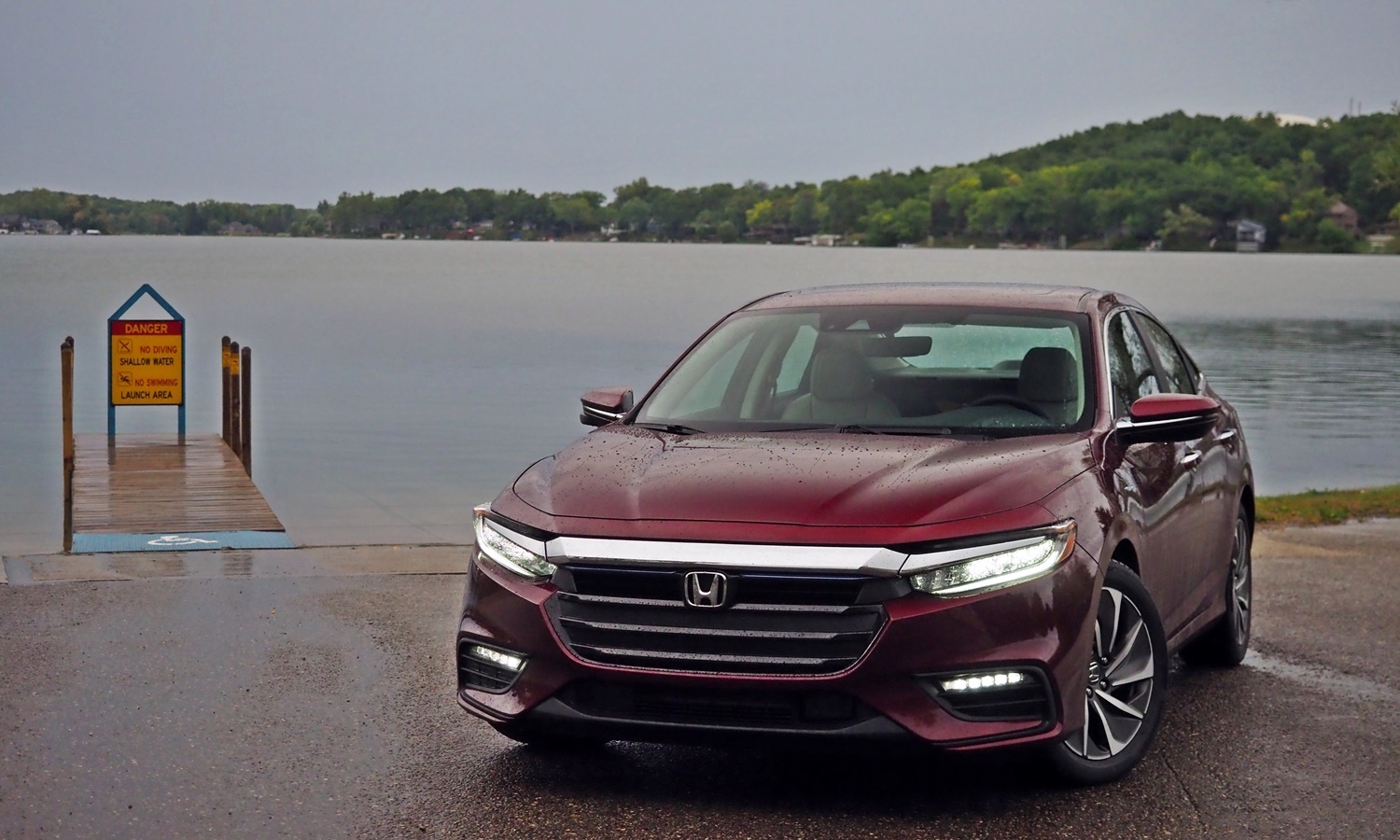
Similar face to the current Accord's. Compared to the Civic's, more chrome and larger grille.
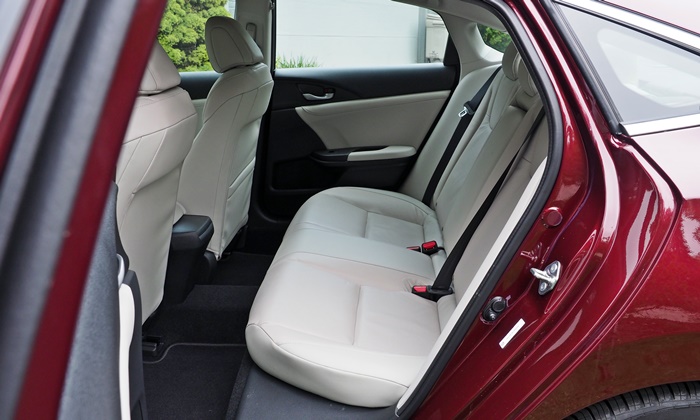
Good legroom, but marginal headroom.
| |
Compared to the Prius |
| Ride smoothness |
 Better
Worse
Better
Worse
|
The Honda Insight has more comfort-oriented suspension tuning than the related Civic. Its handling feels secure, but not sporty. (Though the Prius feels even further from sporty.) Its ride feels fairly compliant without feeling floaty, about on par with that of the Prius.
| Front seat support & comfort |
 Better
Worse
Better
Worse
|
Like the related Civic, the latest Honda Insight has a generous amount of shoulder room up front and thus feels more midsize than compact from the driver seat. This said, the instrument panel is a little high for my taste. My sister, who stands just a little over five feet, rejected the Insight while shopping for a new car because she wanted better outward visibility. She now drives a Prius.
I did find the driver seat reasonably comfortable during a couple of four-hour drives. I've had worse experiences in many small Hondas, as their headrests and fixed lumbar bulges tend to jut too far forward for my physique. (Your size and shape and thus your impressions might differ.)
| Rear seat room & comfort |
 Better
Worse
Better
Worse
|
Moving to the rear seat, headroom is in shorter supply than leg room. If you're over my 5-9 you might not fit well back there. The Prius offers an additional half-inch of rear headroom, which might not sound like much but for some people it will make the difference between contacting the headliner and not contacting it.
The third Honda Insight is the sort of car that doesn't get along with TrueDelta's review format. It does most things pretty well, but isn't the best or the worst in any area. Ultimately whether it's the car to buy will come down to a combination of attributes, most likely styling, performance, AND fuel economy. It's more conventionally attractive than direct competitors. It has a more upscale interior. It's quicker than other compact hybrids. Plus it's nearly as efficient as other compact hybrids in around-town driving, if not on the highway. Finally, it has the lowest sticker price, especially when comparing top-trim models. Add it all up, and the latest Insight should sell much better than the previous one. Honda might not have hit a home run with the car, but it didn't strike out, either.
For those who find the Insight's combination of attributes appealing, the car's toughest competition comes from within the Honda showroom. The Accord Hybrid is nearly as fuel efficient, while being roomier, more powerful, and just generally more impressive. But, with list prices ranging from $26,575 to $36,245, the Accord does cost more. Factor price in and the third-generation Insight could be the right car for you.
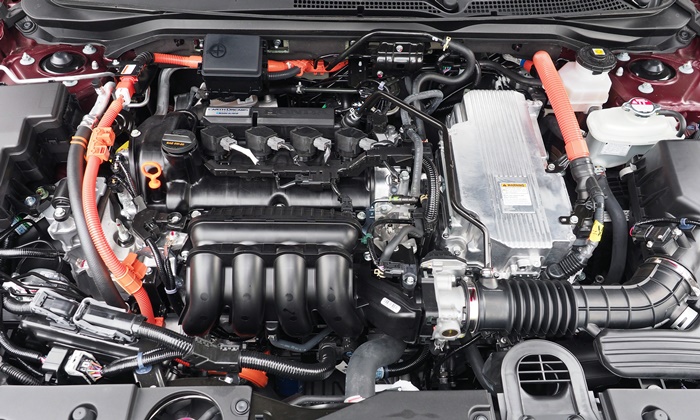
A 1.5-liter engine instead of the 2.0-liter in the Accord Hybrid. Much weaker, not much more MPG.
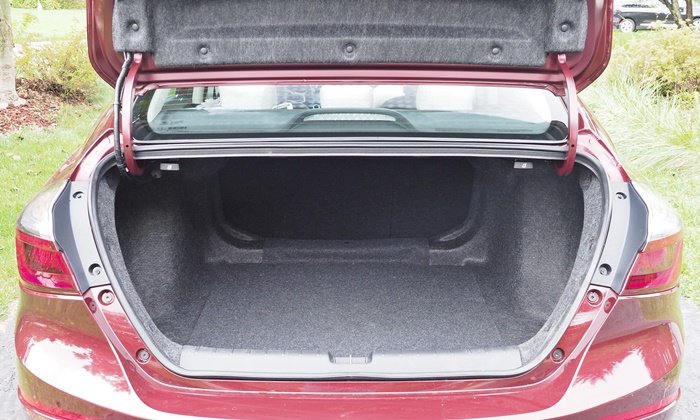
The third insight has a usefully large trunk rather than a hatchback.
See more 2020 Honda Insight photos
Honda and Toyota each provided insured cars for a week with a tank of gas.











